There is so much to see and absorb in Hampi, one definitely needs about 4 days here. Spread over a 16 square miles, this UNESCO World Heritage site has “forts, riverside features, royal and sacred complexes, temples, shrines, pillared halls, mandapas, memorial structures, water structures and others” (from Wikipedia), and is one of the largest ancient monumental cities in the world. And every one of these structure is so detailed and beautiful, one could spend entire days just admiring every carving.
The name Hampi comes from Pampa-kshetra, where Pampa is another name for goddess Parvati. Hampi is also known as Kishkinda Kshetra or Bhaskara-kshetra. They say in Ramayana, Kishkinda is the place where Rama and Laxmana mety Sugriva and Hanuman and the monkey army. In Badami Chalukya inscriptions dating from the 6th and 8th centuries, Pampapura (Hampi) is mentioned as part of their empires.
One of the largest and most in-use monuments here is the imposing Sri Virupaksha temple. From the Sri Virupaksha Temple Bazaar, walk over the hill and get a bird’s eye view of Courtesan’s Street. Once this street was flourishing with trade in gems, pearls, ivory and other expensive stuff. Apparently it was here that dancing girls or courtesans would stand enticing merchants and customers, hence the name.
On the other end of Courtesan’s Street is Achyutaraya Temple. An inscription reads 1534 ad. This temple complex also has a kalyanamandappa or a marriage hall area. I can only imagine the beautiful marriage ceremonies which must be happening here.
See other monuments from our Hampi trip here in an earlier post.
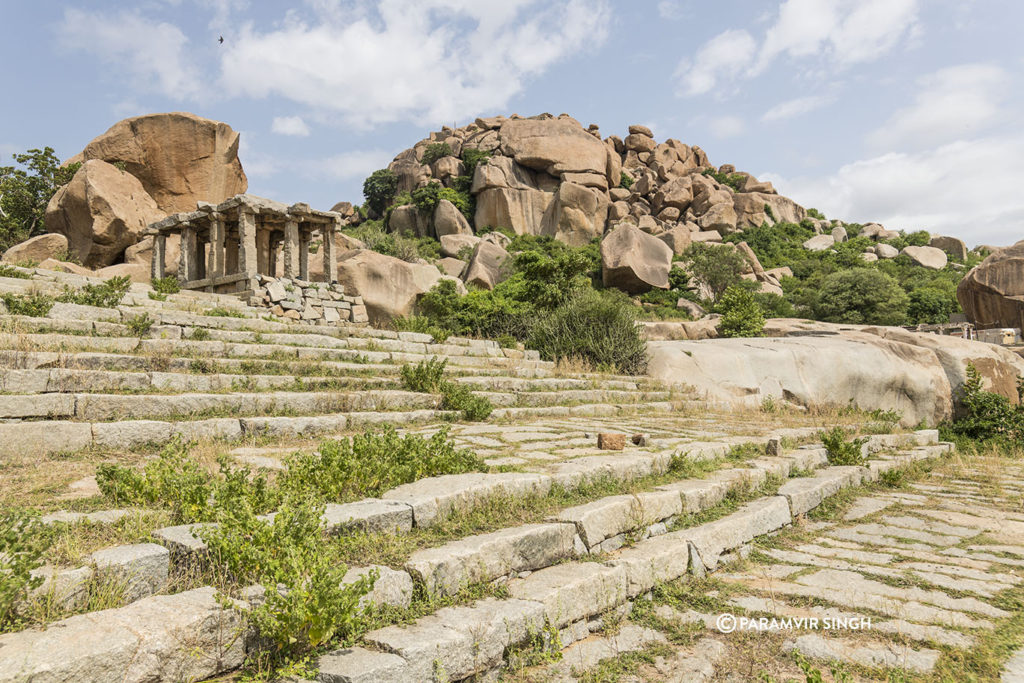
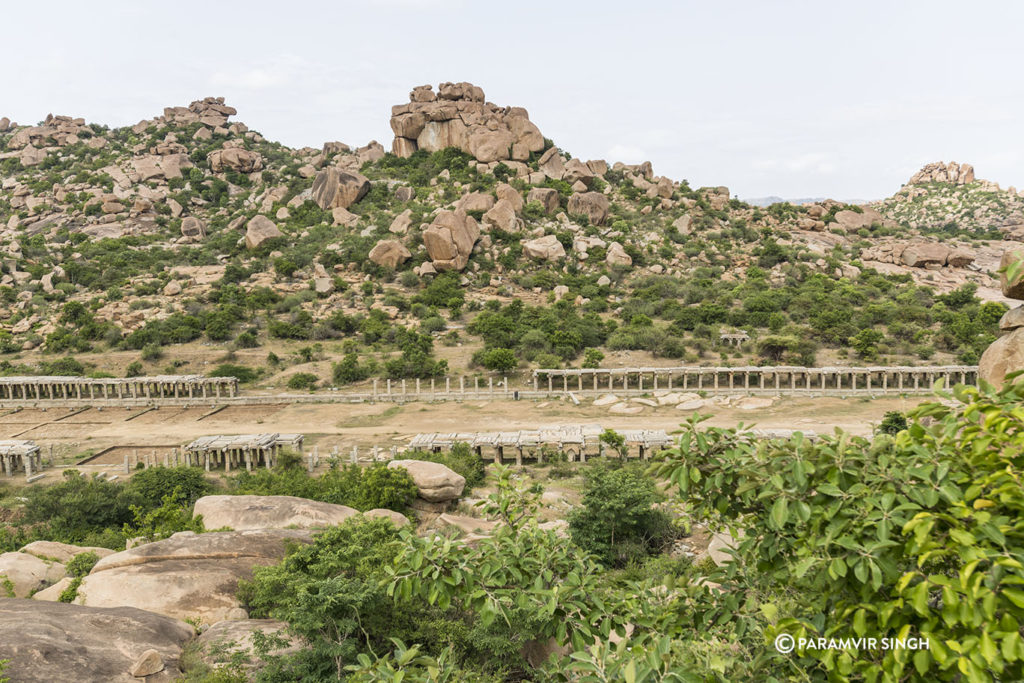
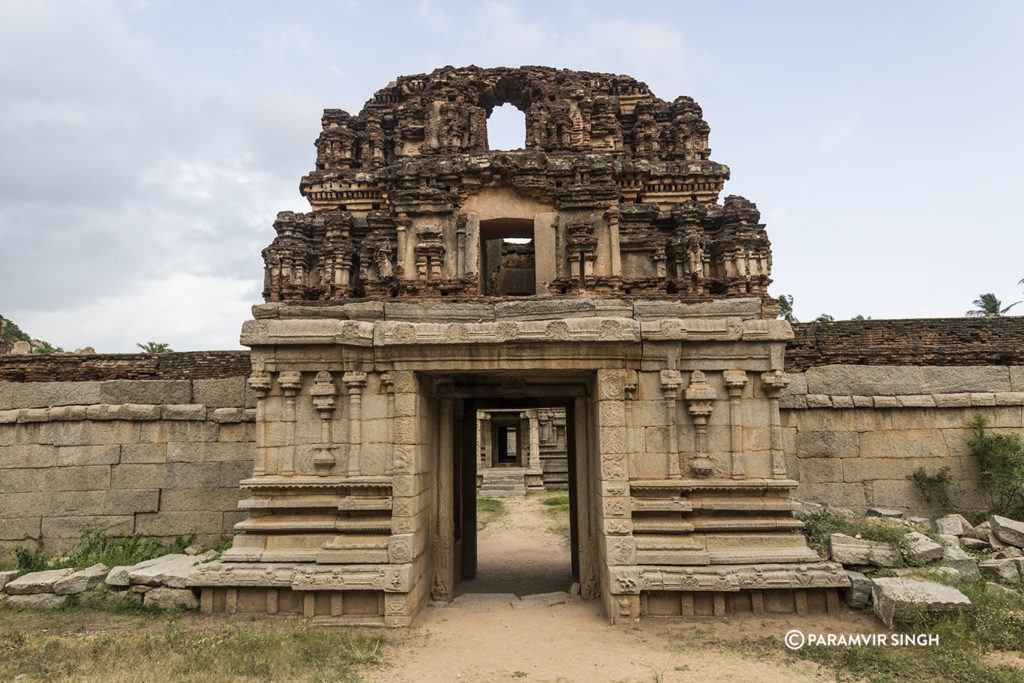
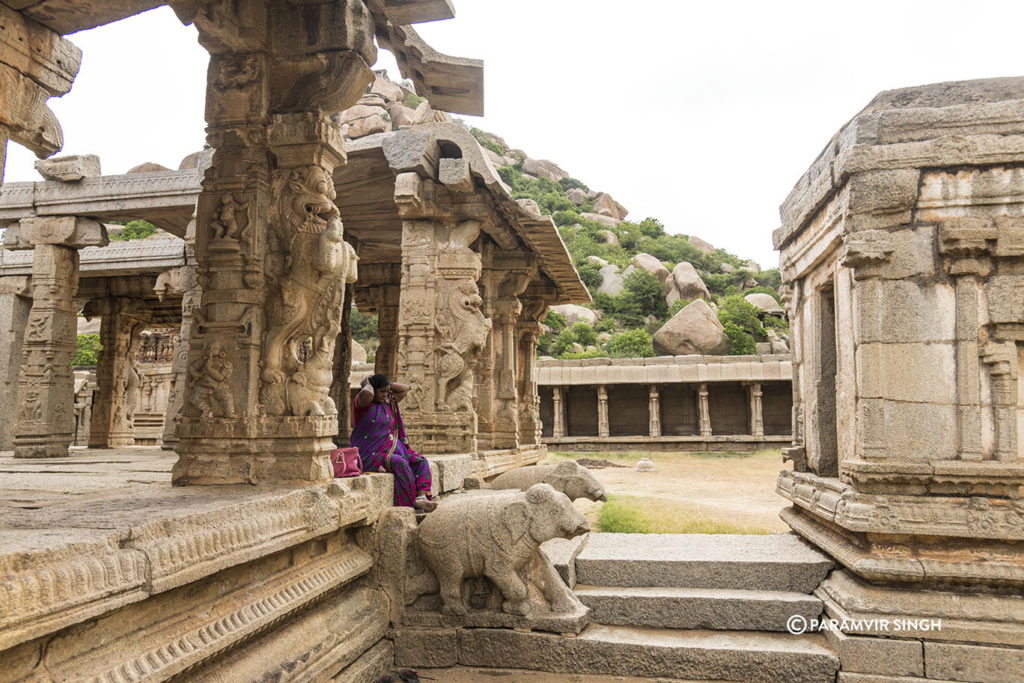
After walking around a bit, we reached the Kodandarama Temple on teh banks of the mighty Tungabhadra River. Under a large tree here, an old couple sat making tea and coffee for any passerbys. We sat by the river, trying to soak all the heavy stuff we had been seeing all day, and also getting some much needed rest. Hampi is a vast area and it can get tiring.
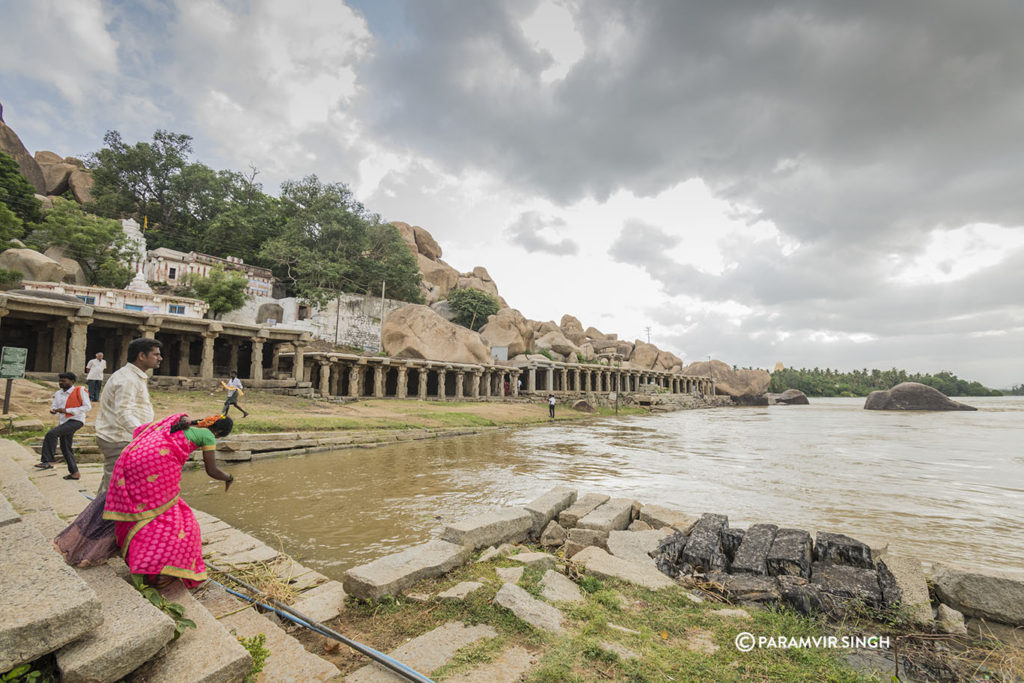
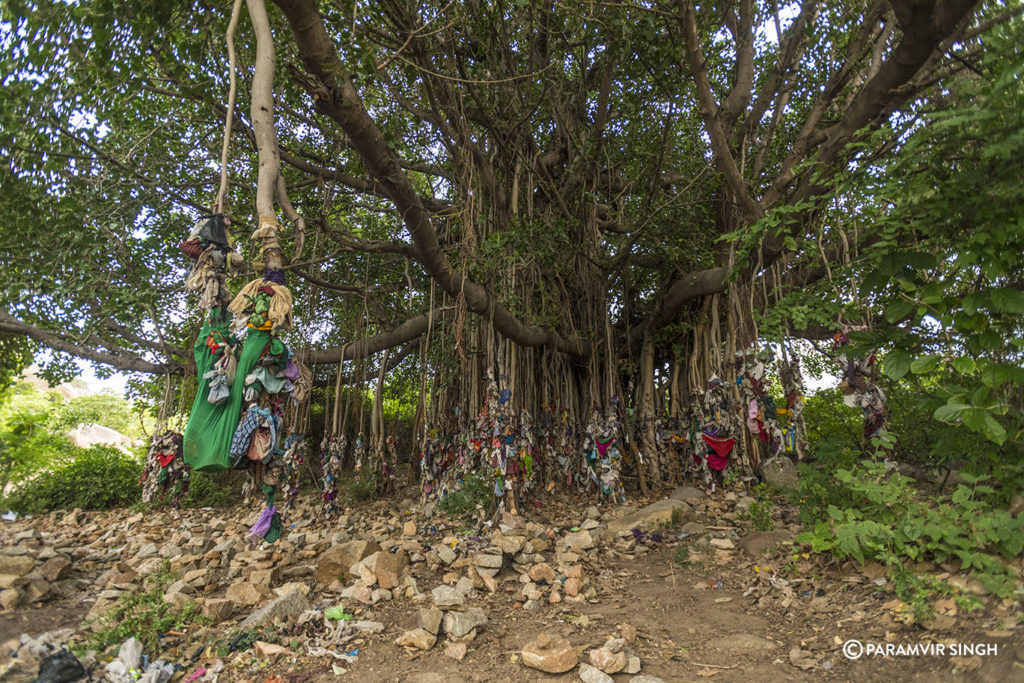
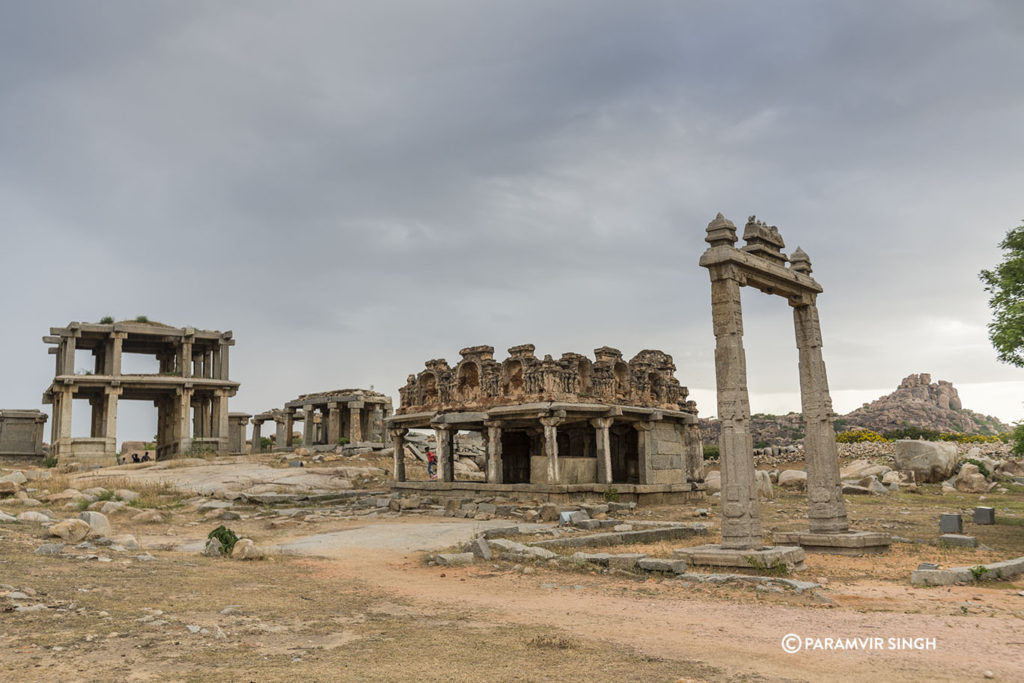
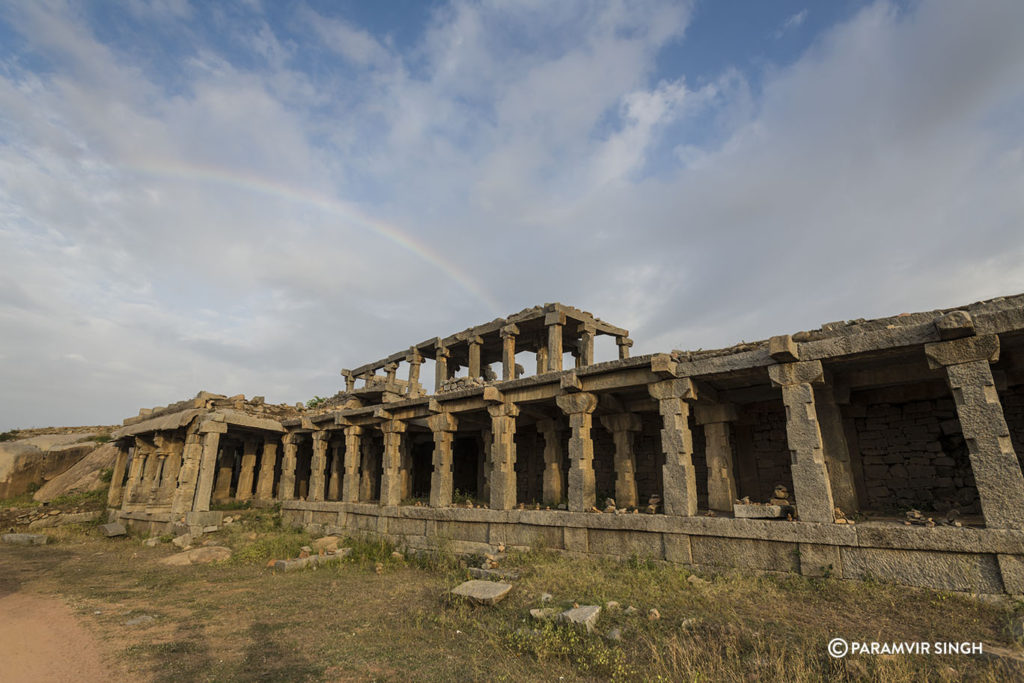
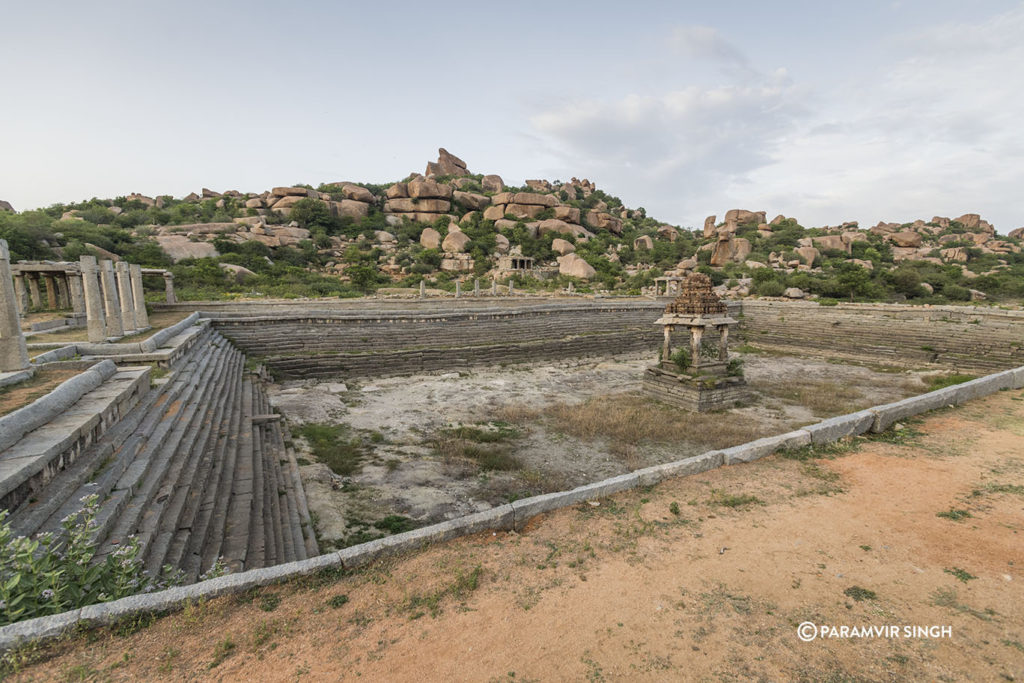
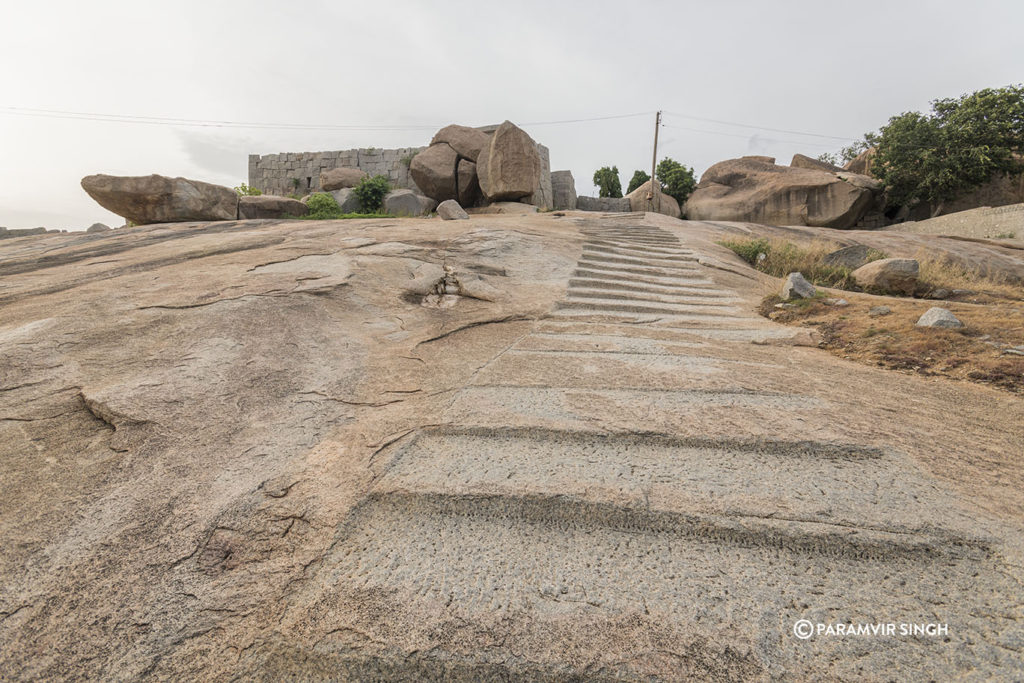
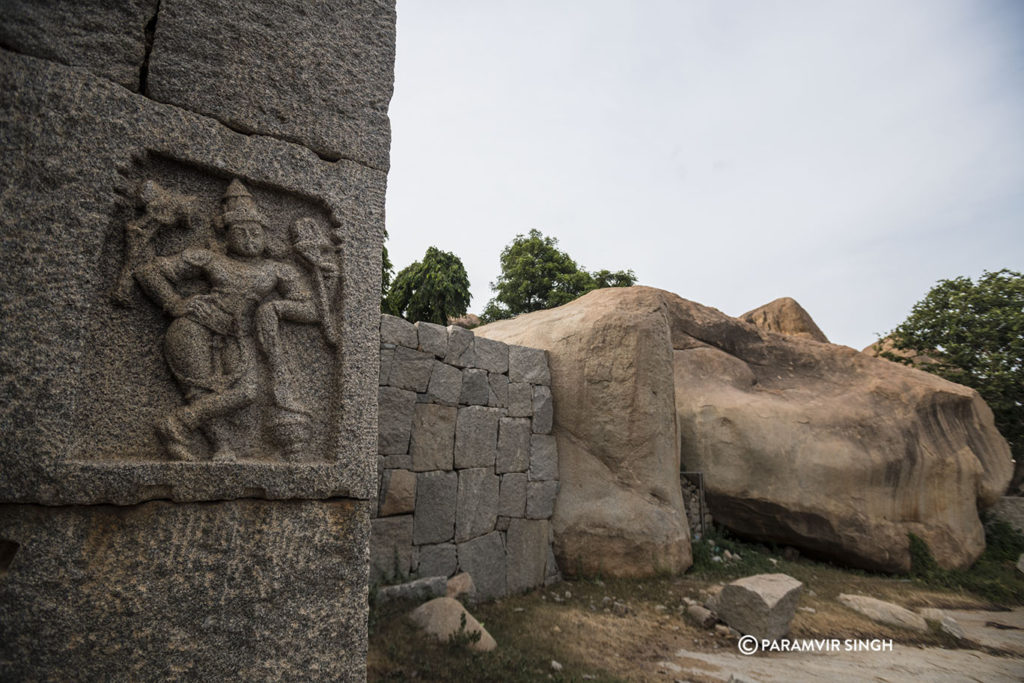
A walk up Hemakuta Hill is highly recommended. Some magnificent architecture, natural ponds, and a great view make this place an absolute must. I loved the old windswept champa tree next to a small temple on this hill.
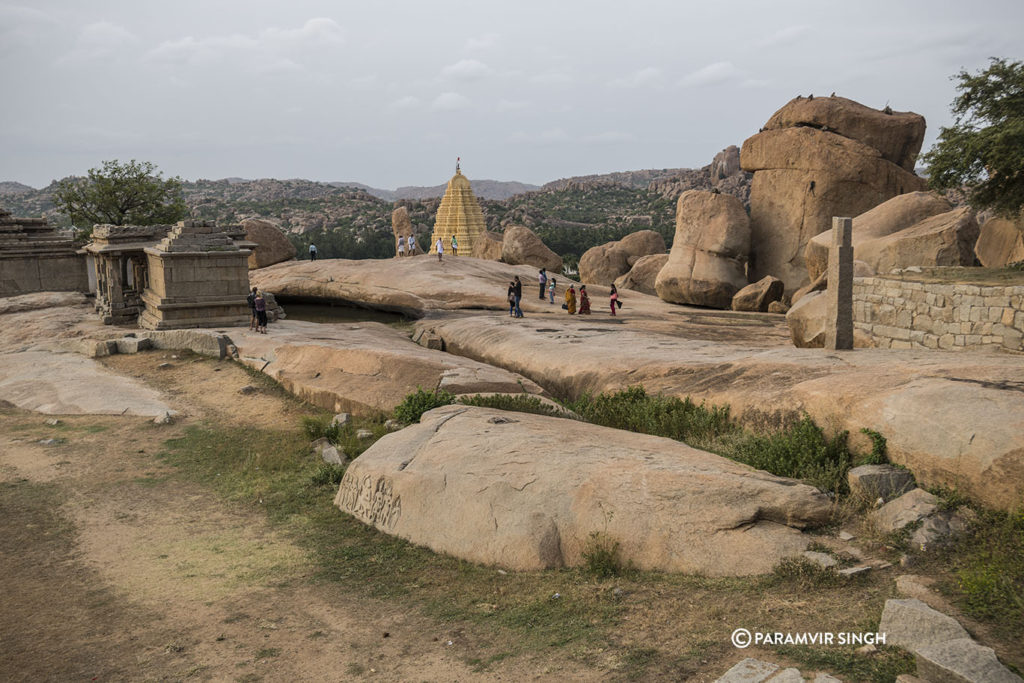
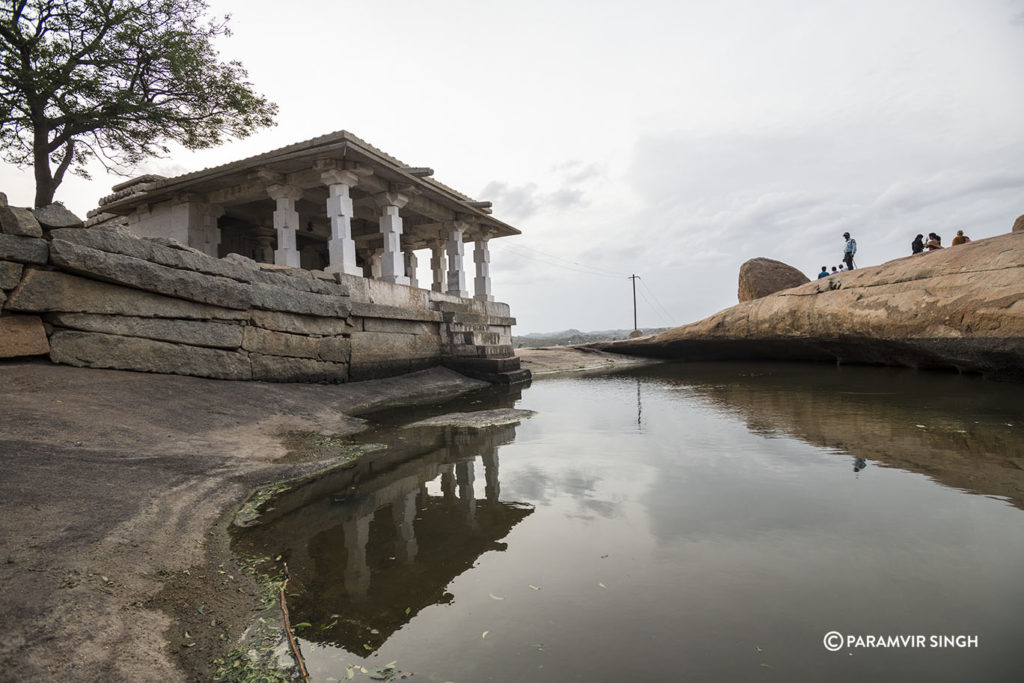
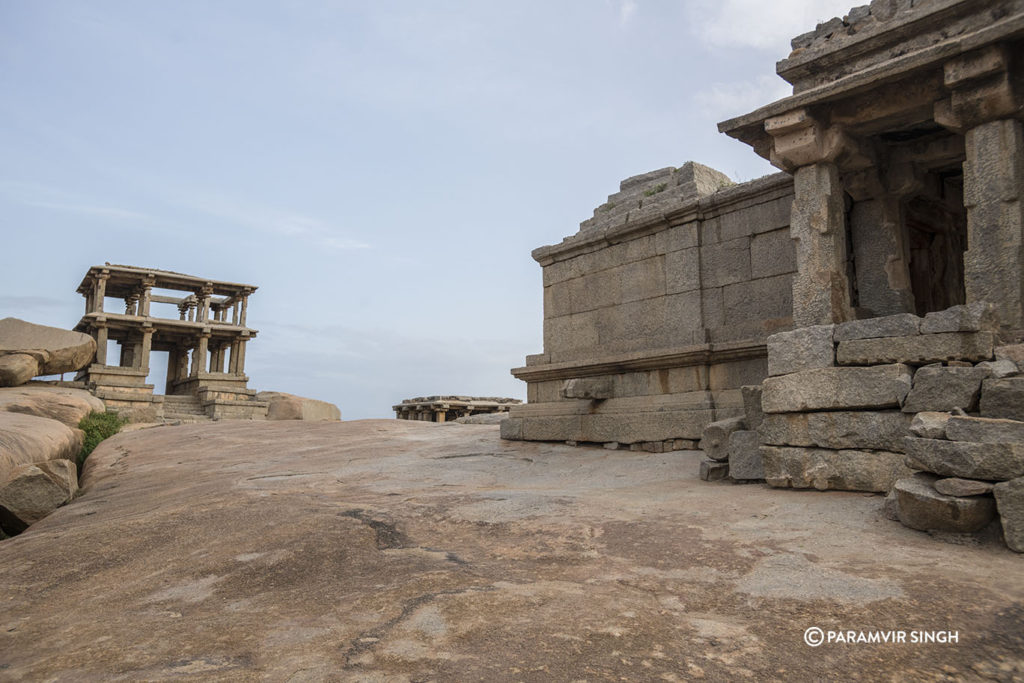
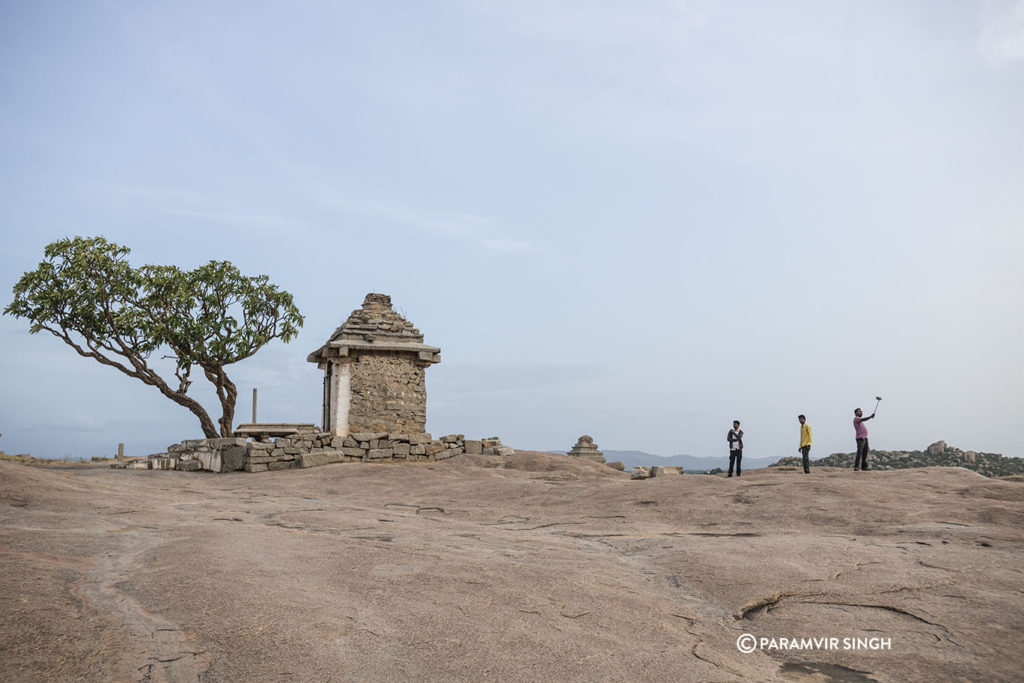
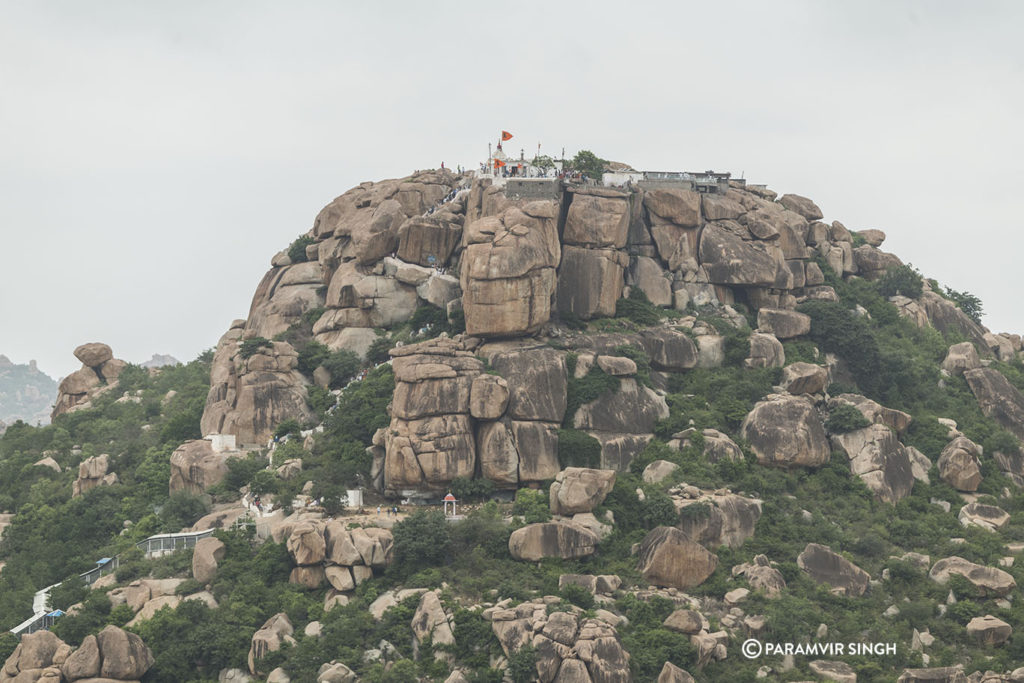
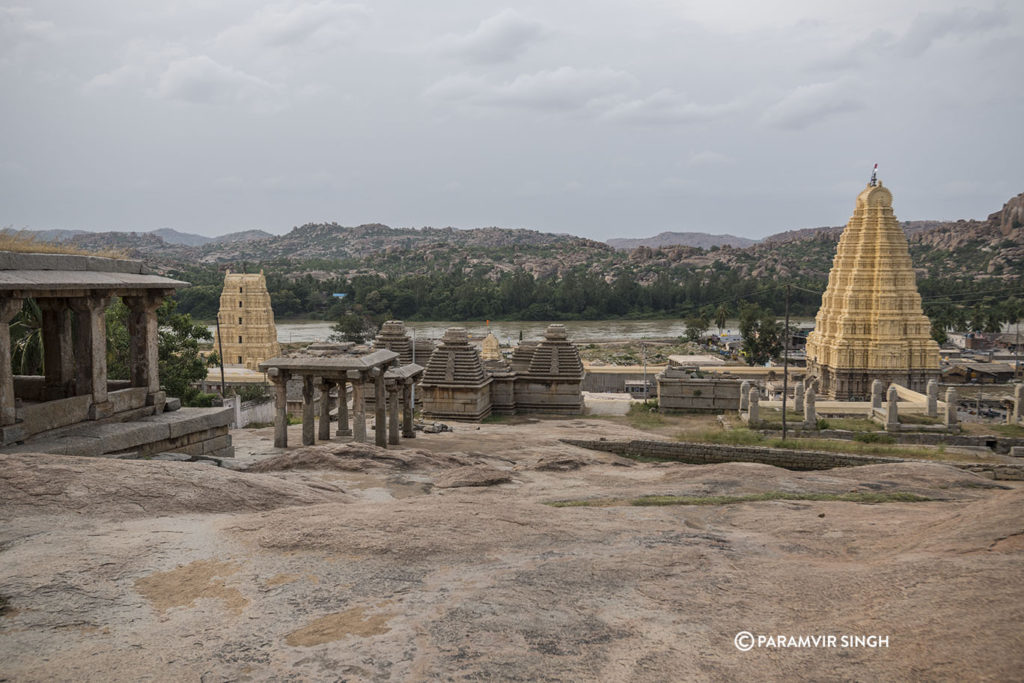
Thus ended the second day at Hampi. With many more monuments to visit, it was another day we were looking forward to.
How to reach Hampi: Trains: There are many trains that stop at Hospet. Hampi is a short bus ride from Hospet.
Flight: The nearest airport is Hubli (around 160km away) but more practical would be Bangalore 270km away. You could land in Bangalore and take the overnight Hampi Express train.
By driving: We drove in. It’s fun. The roads are generally very nice.

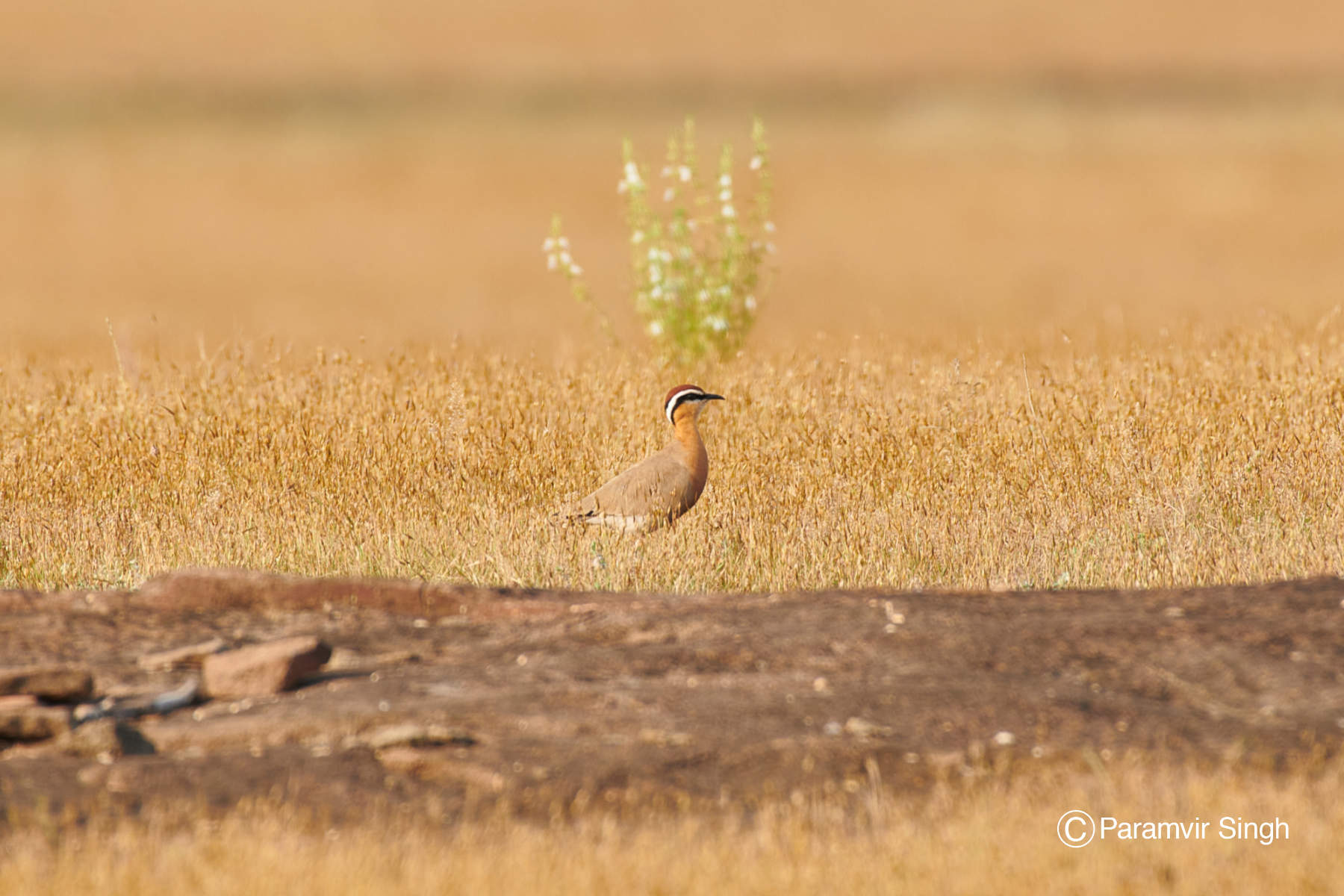


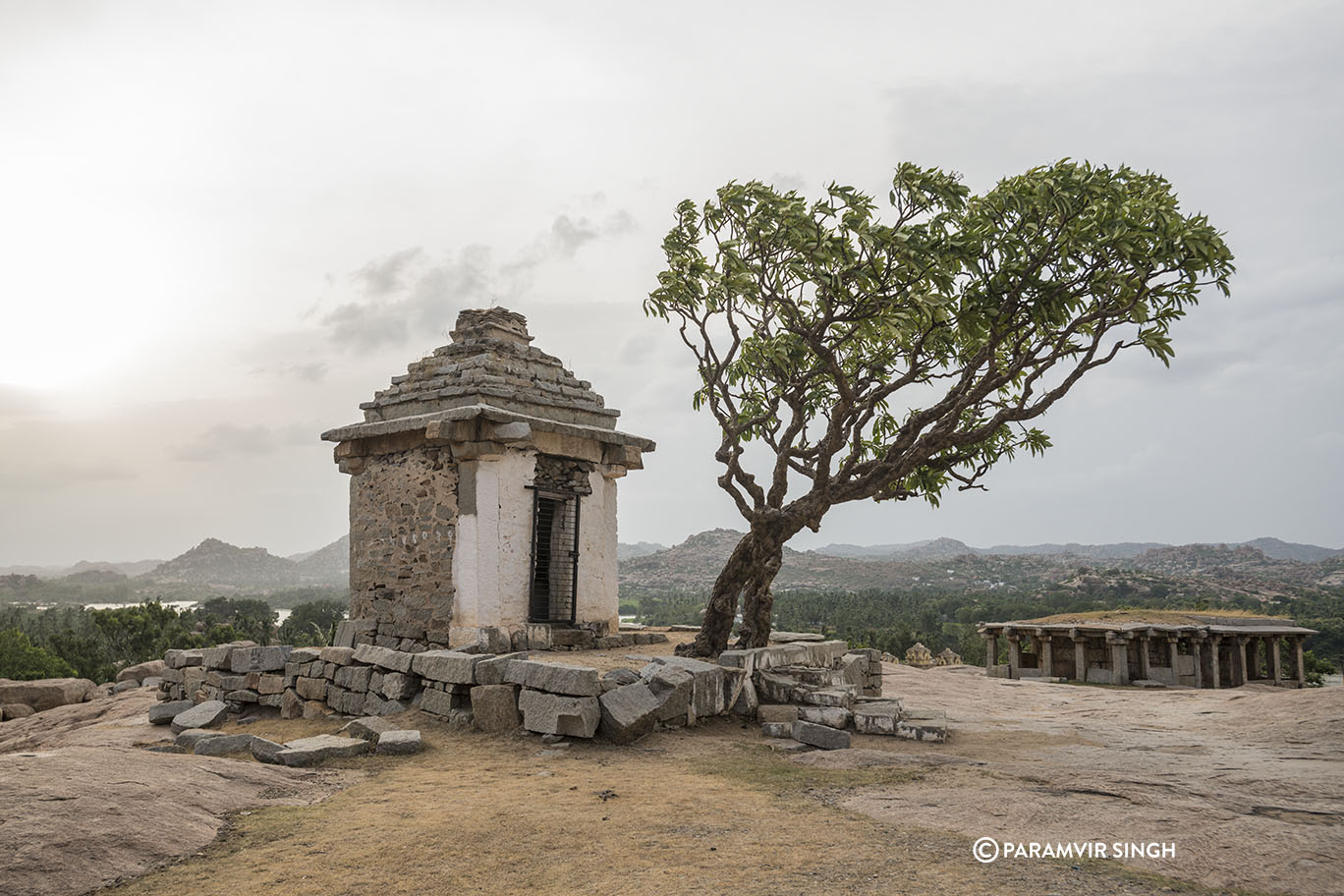


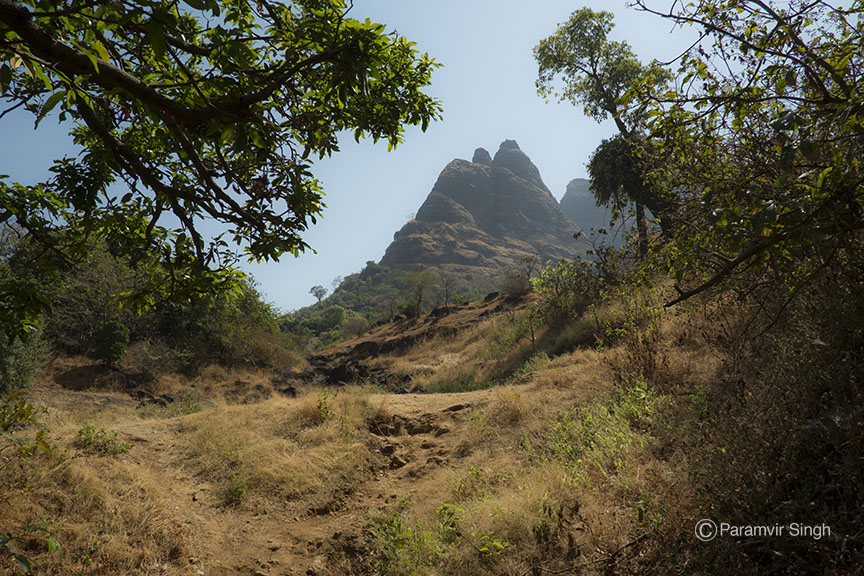
Hampi is one of my favorite places. It’s so mystical and stunning! The sunrises and sunsets are so magical, so romantic… I think it’s an excellent place for slow travel.
Thanks Renuka…
I’ve been enjoying your series on Hampi — they certainly brought back some good memories. I was devastated to read about the recent vandalism to one of the ruins there, and hope that it would be the last. Hampi is unique not only because of the ancient structures, but also the breathtaking natural landscape upon which those monuments were built.
You are so right Bama. The landscape is as stunning, if not more, than these temples, beautifully made they are… and thanks for following up on the series 🙂